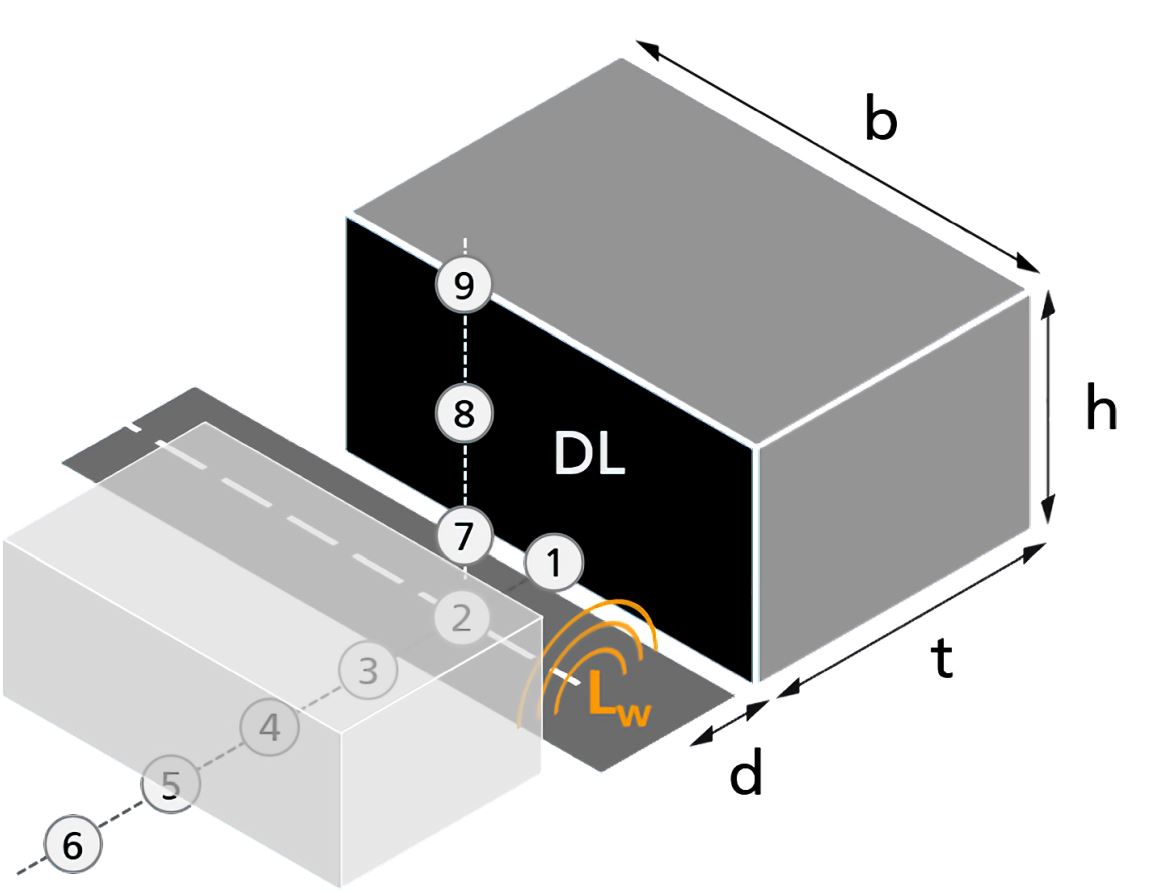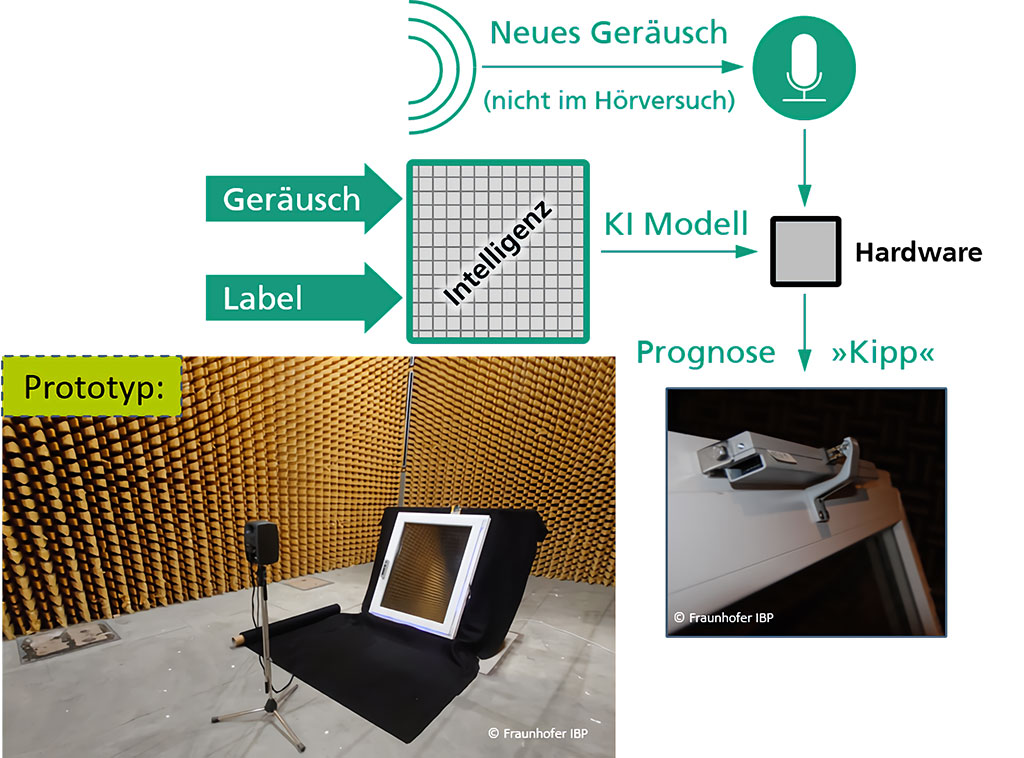
Noise pollution in urban areas is particularly a problem in busy areas, such as railroad lines, street canyons or parking areas, and is therefore a current issue. In such areas, noise is reflected by façade elements that are often designed without sound-absorbing properties. Therefore, façades and balconies fitted with sound-absorbing covering offer the potential to reduce sound immission in the surrounding area. However, the surface area of sound-absorbing façade elements required for a specific case cannot be estimated without sufficient expertise. In addition, façade openings, such as those created when windows are opened to air a room, increase noise pollution inside the building. Therefore, acoustically-regulated façade systems also serve to reduce noise pollution indoors.
